Become an Airline Pilot
Do you dream of becoming an airline pilot? Would you enjoy a career in which you get paid to travel the world while operating the world’s most advanced aircraft? Airline pilots enjoy a variety of job benefits, including lucrative employment benefits, financial security, flexible schedules, consistent travel opportunities. and of course, the best views in the world! Being an airline pilot is a job many people find rewarding.
Ready to become the pilot you're meant to be?
Click below to start your pilot training journey today at CAU!
Contact CAU
Visit CAU
1450 Boughton Drive
Bakersfield, CA 93308
See All Locations
Call CAU
661-615-5915
Email CAU
[email protected]
Top Airline Pilot Career Benefits
Airline pilots enjoy many career benefits, including high compensation, predictable and flexible schedules, and frequent travel opportunities.
Airline pilots have the opportunity to create a lot of personal wealth. According to the U.S. Bureau of Labor Statistics, the median pilot salary in 2023 was over $219,140 per year for airline pilots, copilots, and flight engineers. Airline pilot salaries can vary widely, and are lower of higher depending on the size, region, and individual contract of each airline. Major airlines offer higher pay than regional airlines, for example. Airline pilots today are paid more than ever, and airline pilots across the industry receive high salaries, lucrative retirement benefits, and competitive benefits like disability, paid and unpaid time off, life insurance, and health benefits.
The world will always need airlines and airline pilots. While the industry is reactive to recessions and world issues like pandemics, airlines are typically a necessary part of a country’s economic success. In today’s global world, airlines are important for the transport of people and goods, making the airline industry a stable and reliable career option. Within airlines, pilots can advance to leadership and management opportunities, broadening their skills and contributing to the future of the industry.
Airline pilots often enjoy flexible and consistent schedules, although they may be a bit non-traditional when compared to other careers. While many people work 8 a.m. to 5 p.m. Monday through Friday each week, airline pilots often work 3 days on with 4 days off at a time, and are away from home during their work days. Airline pilot schedules vary, but a traditional airline pilot schedule might include about 15-18 days of work per month, which means they have 15 days or more off each month.
Work-life balance for pilots is usually one of the perks, but as with many career fields, some of those perks like schedule flexibility and time off come with seniority. New pilots have less flexibility than pilots who have gained seniority over many years at the same company.
Paris one night, London the next? Airline pilots are the ultimate jetsetters. While the job comes with some challenges (jet lag), ultimately most airline pilots enjoy the travel perks that come with the job. In addition to traveling while at work for an airline, most also enjoy travel perks like (mostly) free standby travel on other airlines, hotel discounts, and more.
Airline pilots must undergo strict training for each aircraft they fly. They must know their airplane inside and out, and must return for training at least annually, sometimes more depending on the company. Most pilots enjoy the technical aspect of the job and spend a lot of time working on mastering their skills and maintaining currency.
Fly for Major Airlines & Low-cost Carriers (LCC)
The ultimate career goal for most airline pilots is to fly for a major airline or a low-cost carrier. “Major Airline” is a loosely defined term that typically describes an airline with over $1 billion in revenue. These airlines are often referred to as Legacy airlines or sometimes National airlines, and include airlines like Delta Air Lines, American Airlines, and United Airlines. Low-cost carriers are usually (not always) smaller than major airlines and came about because of their simple, low-cost customer pricing strategies that include bare-bones services. Examples of these include Southwest Airlines, Frontier Airlines, and Spirit Airlines.
Fly for Alaska Airlines
Alaska Airlines is known for its strong presence on the West Coast and its customer-centric approach to service. As a pilot for Alaska, you’ll fly a modern fleet of Boeing and Airbus aircraft, connecting passengers to destinations across the U.S., Mexico, and beyond. The airline emphasizes professional development, providing pilots with comprehensive training and career advancement opportunities. Alaska is also recognized for its environmental stewardship, being a leader in sustainability efforts within the aviation industry. Pilots at Alaska Airlines benefit from a close-knit, supportive work environment and a company-wide commitment to operational excellence.
To become a pilot for Alaska Airlines, you need to earn a Commercial Pilot License, build significant flight hours, obtain an Airline Transport Pilot (ATP) certificate, meet their specific flight time requirements (usually including a minimum of 1,500 hours), pass a First Class medical certificate, and apply through their pilot hiring process, often utilizing their "Pathway" program which typically involves flying for their regional partner, Horizon Air, first; you can also consider their Ascend Pilot Academy for a structured training path to reach the necessary qualifications.
Regional Affiliate(s): Horizon Air, SkyWest Airlines
Fly for Allegiant Airlines
Allegiant Air is a low-cost carrier focused on connecting smaller U.S. cities to popular vacation destinations. Known for its point-to-point service, Allegiant offers pilots the opportunity to fly a fleet of Airbus A320 family aircraft on primarily domestic leisure routes. As a pilot for Allegiant, you’ll enjoy a work-life balance that comes with a focus on shorter routes, as well as a direct and efficient operational structure. Allegiant is well-suited for pilots seeking a stable, growing company that emphasizes a community-oriented work environment and values simplicity in operations.
Regional Affiliate(s): Does not have traditional regional affiliates and operate their fleets independently on point-to-point routes.
Fly for American Airlines
American Airlines is one of the largest airlines in the world, offering an extensive global network spanning six continents. As a pilot for American, you will operate a modern fleet that includes Boeing and Airbus aircraft, flying a wide variety of routes from regional to long-haul international destinations. American emphasizes rigorous training, safety, and career development, providing pilots with opportunities to grow within the company or transition into leadership roles. The airline is also committed to sustainability and innovation, ensuring that pilots are part of a forward-thinking, customer-focused operation.
Regional Affiliate(s): Envoy Air, Piedmont Airlines, PSA Airlines
Fly for Delta Air Lines
Delta Air Lines is a global leader in aviation, known for its extensive international and domestic route network, modern fleet, and commitment to innovation and customer service. As a Delta pilot, you’ll fly advanced aircraft, including the Airbus A350 and Boeing 777, to some of the most sought-after destinations in the world. Delta is dedicated to pilot training, offering robust programs that focus on safety, technical excellence, and career progression. With one of the most comprehensive compensation and benefits packages in the industry, Delta offers its pilots a solid foundation for long-term career success.
Regional Affiliate(s): Endeavor Air, SkyWest Airlines, Republic Airways, GoJet Airlines
Fly for Frontier Airlines
Frontier Airlines is an ultra-low-cost carrier that operates a modern fleet of Airbus A320neo family aircraft. As a Frontier pilot, you’ll fly a variety of domestic and limited international routes, often connecting travelers to popular leisure destinations. Frontier is known for its fuel-efficient fleet and commitment to environmentally friendly practices. Pilots at Frontier benefit from a growing network, clear career progression opportunities, and a strong focus on operational efficiency. The airline's simplified fare structure and no-frills approach make it an appealing choice for pilots who enjoy flying point-to-point routes in a cost-conscious, dynamic environment.
Regional Affiliate(s): Does not have traditional regional affiliates and operate their fleets independently on point-to-point routes.
Fly for Hawaiian Airlines
Hawaiian Airlines is the largest airline based in Hawaii, providing interisland, domestic, and international flights across the Pacific. As a Hawaiian Airlines pilot, you’ll have the unique experience of flying widebody aircraft like the Airbus A330 and Boeing 787, as well as narrowbody A321neos, connecting Hawaii to destinations in the U.S., Asia, Australia, and more. Hawaiian is known for its exceptional service, focus on Hawaiian culture, and commitment to sustainability. Pilots can expect a strong emphasis on safety, professional development, and the opportunity to fly some of the most scenic and rewarding routes in the world.
Regional Affiliate(s): Does not have traditional regional affiliates; operates its own regional flights within Hawaii using the Boeing 717 and ATR 42 aircraft through its own brand.
Fly for JetBlue Airways
JetBlue Airways is a major low-cost carrier that operates domestic and international routes with a fleet of Airbus A320s, A321s, and Embraer E190s. JetBlue is known for its customer-friendly approach, offering perks like free inflight entertainment and extra legroom. As a JetBlue pilot, you’ll fly a variety of routes across the U.S., the Caribbean, and Latin America, with the opportunity to operate transatlantic flights on the airline's new A321LR and A321XLR aircraft. JetBlue provides a strong sense of community, a focus on innovation, and excellent career growth opportunities for pilots within a rapidly expanding network.
Regional Affiliate(s): Does not have traditional regional affiliates, but operates smaller aircraft (e.g., Embraer E190/E195) directly.
Fly for Southwest Airlines
Southwest Airlines is the largest low-cost carrier in the U.S., known for its friendly work environment, operational efficiency, and point-to-point route network. As a Southwest pilot, you will exclusively fly Boeing 737 aircraft, serving a wide range of domestic and select international destinations. Southwest is well-regarded for its strong company culture, valuing teamwork, employee well-being, and customer satisfaction. The airline offers excellent career stability, a comprehensive training program, and opportunities for growth, making it a great choice for pilots seeking a rewarding and dynamic career.
Regional Affiliate(s): Does not have any regional affiliates. Unlike the major legacy carriers, Southwest operates a single fleet of Boeing 737 aircraft across all its routes, utilizing a point-to-point network rather than relying on regional airlines to feed into larger hubs. This model allows Southwest to maintain a simplified operation and lower costs, avoiding the use of smaller regional carriers altogether.
Fly for Spirit Airlines
Spirit Airlines is the leading ultra-low-cost carrier in the U.S., known for its no-frills, budget-friendly approach. As a Spirit pilot, you’ll operate a modern fleet of Airbus A320 family aircraft on domestic and Caribbean routes, with occasional flights to Latin America. Spirit focuses on operational simplicity and efficiency, providing pilots with a fast-paced work environment and opportunities for career growth within a rapidly expanding airline. Pilots benefit from a highly competitive compensation package and a dynamic, team-oriented culture.
Regional Affiliate(s): Does not have traditional regional affiliates and operate their fleets independently on point-to-point routes.
Fly for Sun Country Airlines
Sun Country Airlines is a low-cost carrier based in Minneapolis, offering scheduled passenger service, charter flights, and cargo operations. Known for its seasonal network that focuses on leisure destinations, Sun Country operates a fleet of Boeing 737 aircraft. As a Sun Country pilot, you’ll fly a mix of domestic and limited international routes, often to vacation hotspots. The airline’s smaller size allows for a close-knit, community-focused work environment, while its growing network provides ample opportunities for career development and advancement.
Regional Affiliate(s): Does not have traditional regional affiliates and operate their fleets independently on point-to-point routes.
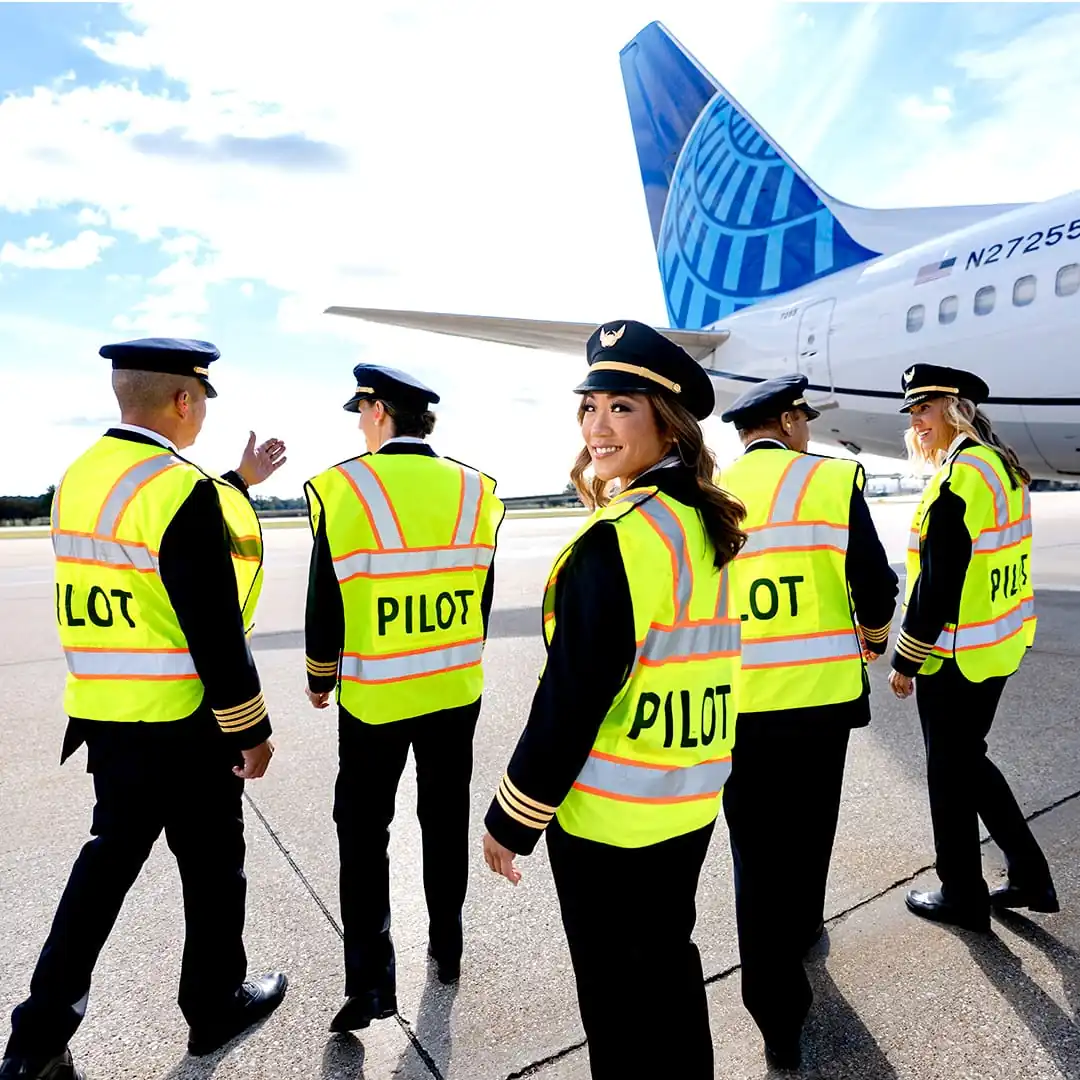
Fly for United Airlines
United Airlines is one of the largest airlines in the world, known for its expansive global network and commitment to innovation in aviation. As a pilot with United, you would be joining a team dedicated to operational excellence and safety, flying state-of-the-art aircraft across a wide range of domestic and international routes. United's training programs emphasize professional growth, technical skills, and leadership, offering pilots the opportunity to advance their careers while exploring new destinations. United also places a strong focus on sustainability, working to lead the industry in eco-friendly practices.
Regional Affiliate(s): Air Wisconsin, CommuteAir, Mesa Airlines, Republic Airways, SkyWest Airlines, GoJet Airlines
Fly for Regional Affiliated Airlines
Regional airlines are where airline pilots first get their wings. Regional airlines fly smaller aircraft shorter distances, and typically include partnerships with major airlines to serve their passengers at more rural airports and in small markets. Regional airlines have less competitive hiring requirements and are usually the first airline type a pilot will be eligible to work for with limited flying hours and experience. While they pay less than major airlines, even regional airlines have very competitive salaries and benefits compared to most careers.

Fly for Air Wisconsin
Air Wisconsin Airlines operates as a regional carrier, partnering primarily with United Airlines under the United Express brand. Known for its focused regional operations, Air Wisconsin provides crucial connections between smaller cities and major hubs across the United States. As a pilot with Air Wisconsin, you’ll experience a strong sense of community within a supportive environment, flying a fleet of Bombardier CRJ-200 aircraft. The airline offers solid career-building opportunities, a comprehensive training program, and pathways to major airlines, making it an ideal choice for those looking to develop their skills and advance in their aviation career.

Fly for CommuteAir
CommuteAir operates as a United Express carrier, flying a fleet of Embraer ERJ-145 jets on regional routes that connect smaller cities to United’s main hubs. As a CommutAir pilot, you’ll benefit from a strong pilot training program, a supportive team environment, and a direct pathway to United Airlines through the company’s career progression program. CommutAir focuses on professional growth, offering pilots opportunities to gain valuable experience while positioning themselves for future roles with United.
Major Affiliate(s): United Airlines
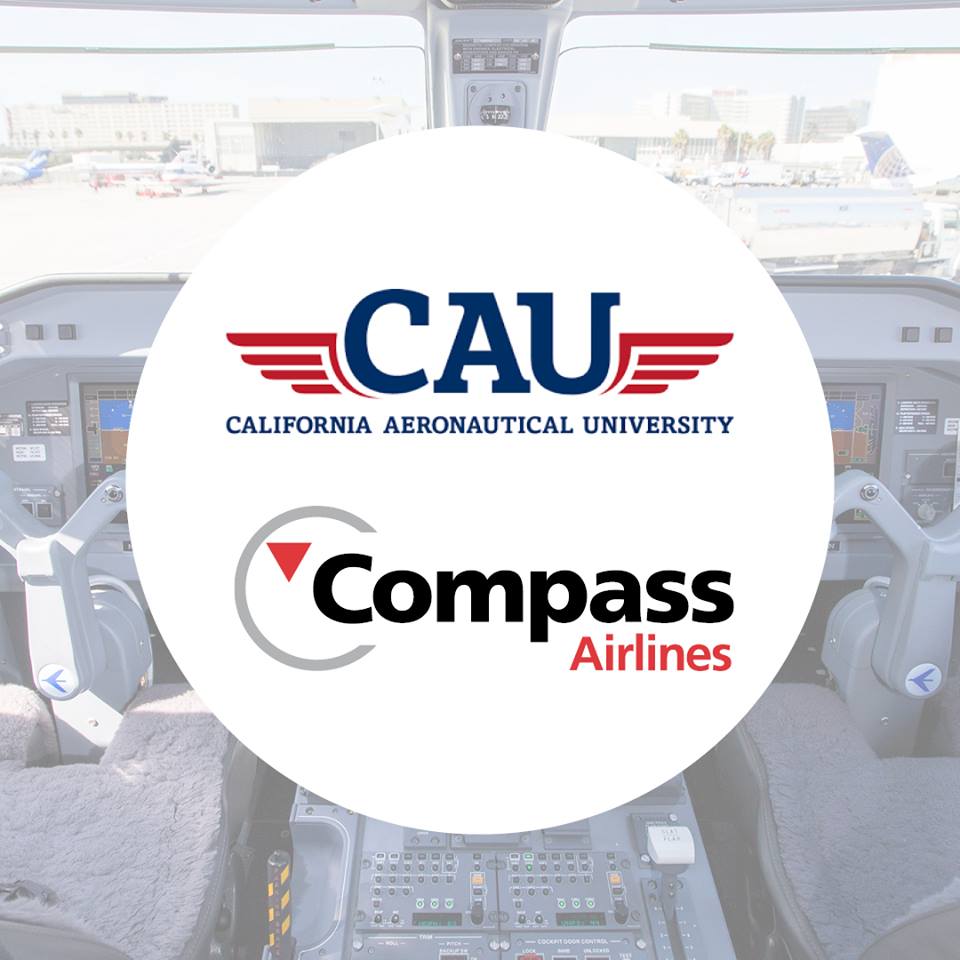
Fly for Compass Airlines
Compass Airlines primarily operates for Delta Connection and American Eagle, flying Embraer E175 jets. As a Compass pilot, you’ll serve on routes connecting regional airports to major hubs across North America. The airline emphasizes a collaborative work environment, comprehensive training programs, and a strong safety culture. Compass offers pilots opportunities for career growth, including advancement into its partner major airlines, making it a great stepping stone for pilots looking to progress in the industry.
Major Affiliate(s): American Airlines, Delta Air Lines
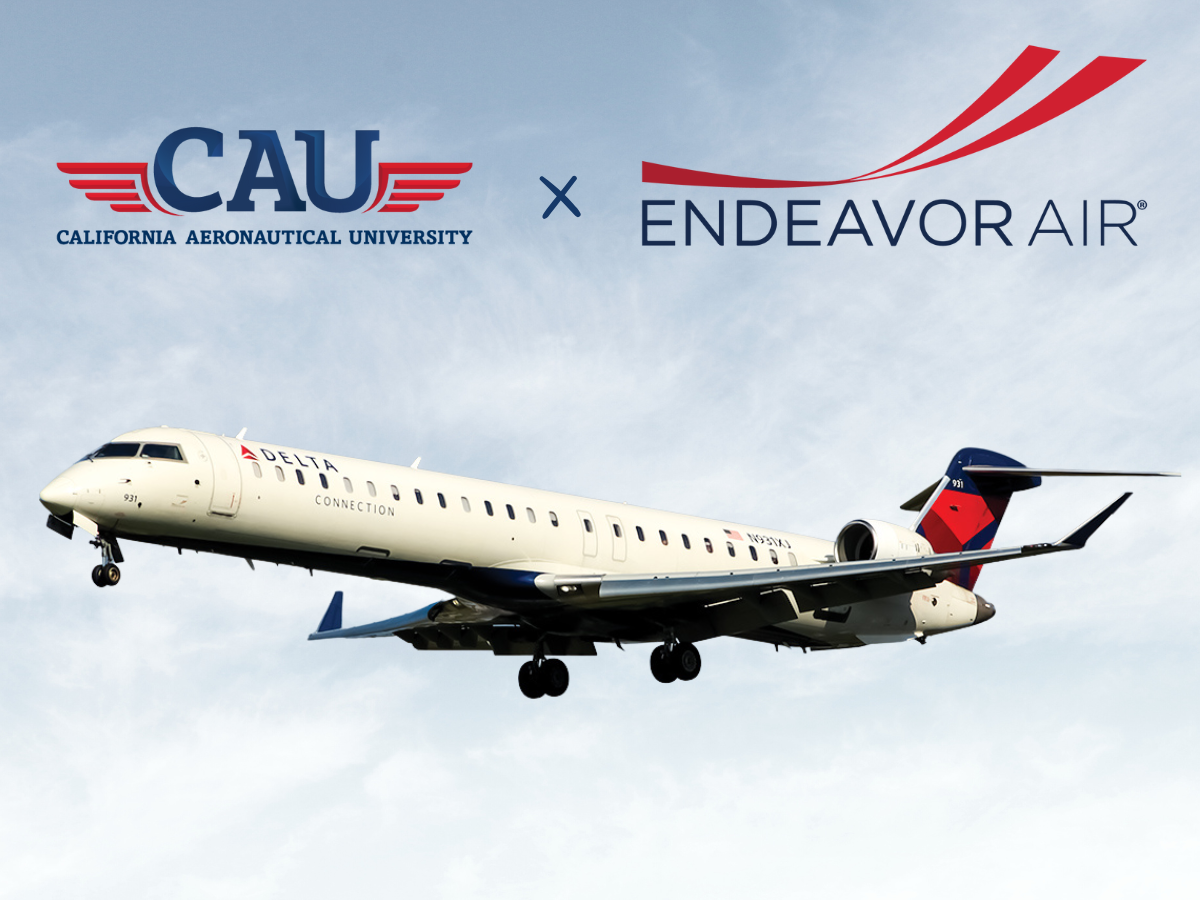
Fly for Endeavor
Endeavor Air is a wholly-owned subsidiary of Delta Air Lines, operating regional flights under the Delta Connection brand. As an Endeavor pilot, you’ll fly Bombardier CRJ aircraft, providing critical regional connections to Delta’s major hubs across the U.S. Endeavor is known for its top-tier training program and a guaranteed flow-through agreement with Delta Air Lines, allowing pilots to advance their careers with a major airline. The airline places a strong emphasis on safety, operational efficiency, and a supportive team environment, making it a popular choice for pilots looking to build experience and progress to Delta.
Major Affiliate(s): Delta Airlines

Fly for Envoy
Envoy Air operates as a wholly-owned subsidiary of American Airlines, flying under the American Eagle brand. As a pilot for Envoy, you will fly regional routes on Embraer and Bombardier aircraft, connecting smaller communities to major American Airlines hubs. Envoy offers a streamlined path to American Airlines through its flow-through program, allowing pilots to advance their careers without the need for additional interviews. The airline focuses on safety, training, and providing a supportive environment for its crew, making it an excellent starting point for pilots seeking long-term careers with a major airline.
Major Affiliate(s): American Airlines

Fly for GoJet
GoJet Airlines operates regional flights under the United Express and Delta Connection brands, flying Bombardier CRJ-700/900 jets. As a GoJet pilot, you’ll fly critical regional routes for these major carriers, with opportunities for career progression into their mainline operations. GoJet is known for its robust training programs, supportive work environment, and strong commitment to safety and operational excellence. The airline offers career advancement through flow-through agreements with its partner airlines, providing pilots with a clear path to major airline careers.
Major Affiliate(s): Delta Air Lines, United Airlines
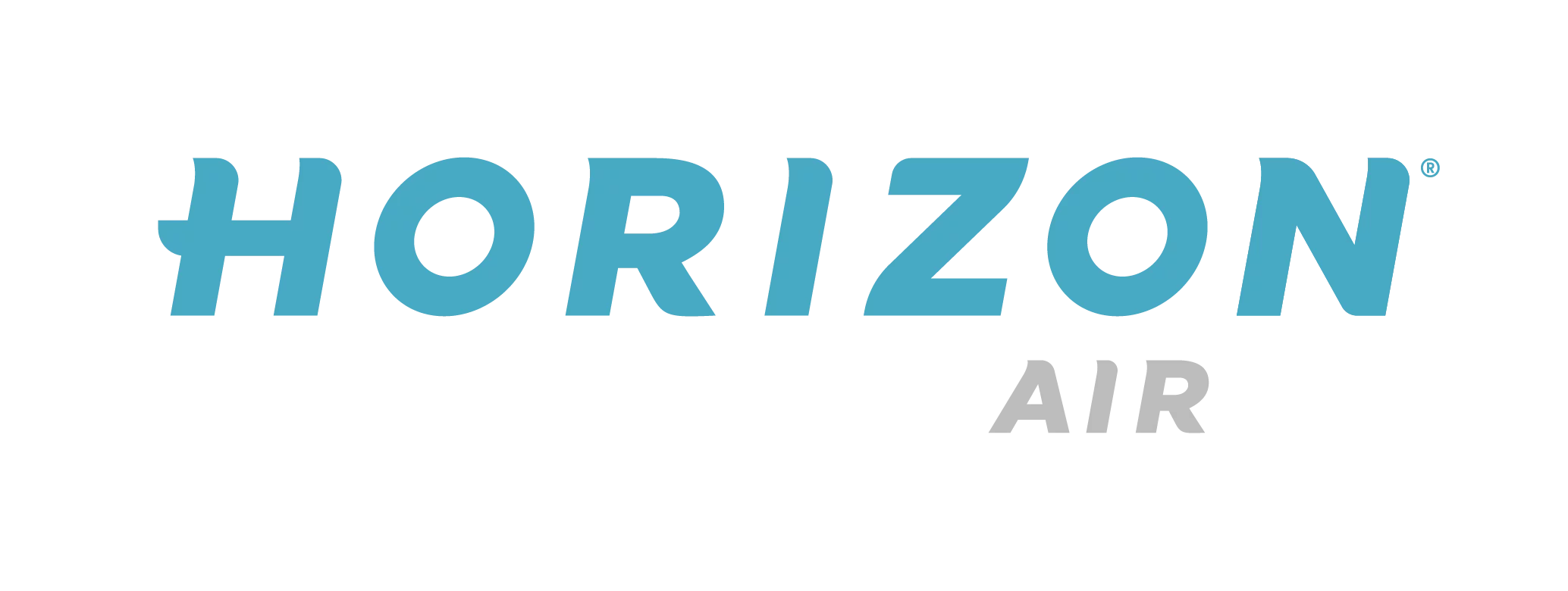
Fly for Horizon
Horizon Air is a regional airline that operates under the Alaska Airlines brand, flying a fleet of Bombardier Q400 turboprops and Embraer E175 jets. As a Horizon pilot, you’ll serve regional routes throughout the Pacific Northwest, California, and beyond, connecting passengers to Alaska Airlines’ mainline network. Horizon offers a strong company culture, excellent training programs, and a clear pathway to career advancement with Alaska Airlines through its pilot development programs. Known for its focus on operational reliability and customer service, Horizon provides pilots with a supportive, close-knit work environment and ample opportunities for growth.
Major Affiliate(s): Alaska Airlines
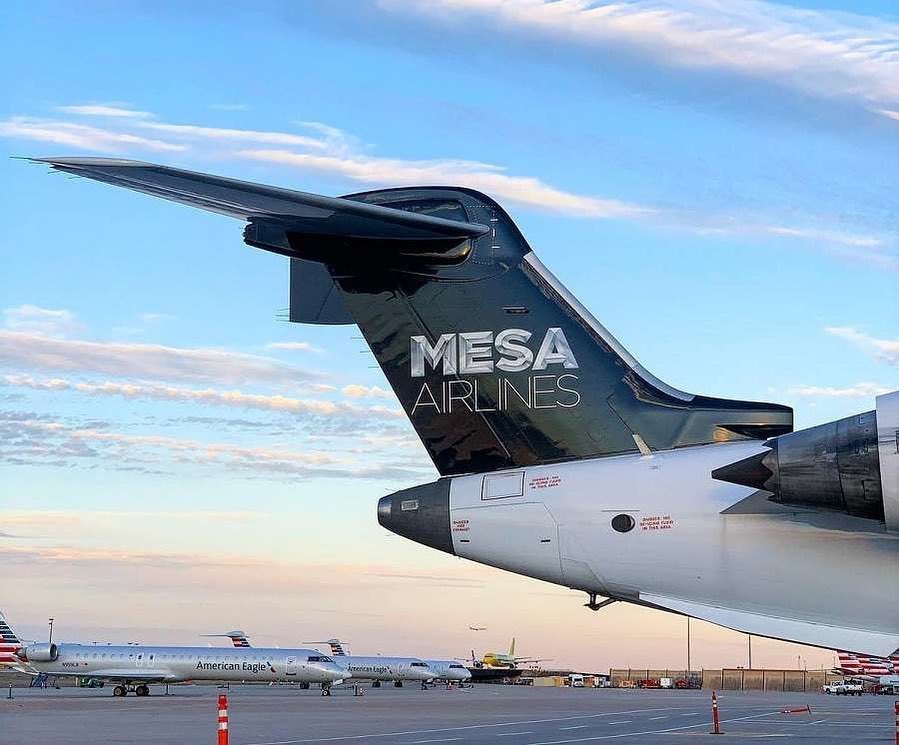
Fly for Mesa Airlines
Mesa Airlines operates under the American Eagle and United Express brands, providing regional service on Embraer and Bombardier aircraft. As a Mesa pilot, you’ll have access to the airline’s flow-through agreements with American and United, offering a streamlined path to career advancement with major airlines. Mesa is known for its strong training programs, collaborative culture, and a commitment to operational safety and efficiency, making it an attractive option for pilots seeking to build experience and move up within the industry.
Major Affiliate(s): American Airlines, United Airlines
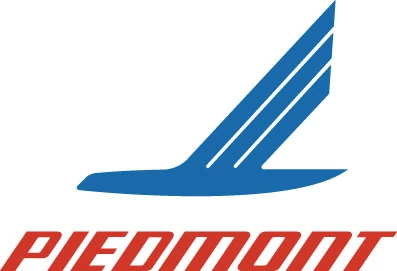
Fly for Piedmont
Piedmont Airlines, a subsidiary of American Airlines, operates regional flights primarily on Bombardier Dash 8 turboprop and Embraer jets under the American Eagle brand. As a Piedmont pilot, you will be part of a strong community with a direct pathway to American Airlines through the company’s flow-through agreement. Piedmont emphasizes comprehensive pilot training, career development, and a close-knit work environment, making it a great choice for pilots looking to gain experience in regional aviation while positioning themselves for future opportunities with a major carrier.
Major Affiliate(s): American Airlines
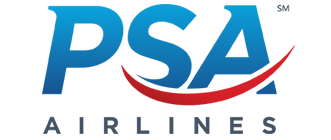
Fly for PSA
PSA Airlines, a wholly-owned subsidiary of American Airlines, operates as part of the American Eagle network. PSA pilots fly regional jets, primarily the Bombardier CRJ series, connecting passengers to American Airlines’ major hubs. The airline is well-known for its pilot development programs, offering a clear path to American Airlines through a flow-through agreement. PSA offers a supportive team environment and emphasizes professional development, making it an attractive option for pilots looking to advance in the aviation industry while working toward a career with a major airline.
Major Affiliate(s): American Airlines
Fly for Republic Airways
Republic Airways operates under the banner of major airlines like American (American Eagle), Delta (Delta Connection), and United (United Express), flying a fleet of Embraer E170/175 aircraft. As a Republic pilot, you’ll have the opportunity to fly regional routes across the U.S., providing essential connections for major airlines. Republic is known for its commitment to safety, professional development, and diversity in the workforce. The airline offers multiple career advancement pathways, including transition opportunities with its major airline partners.
Major Affiliate(s): American Airlines, Delta Air Lines, United Airlines
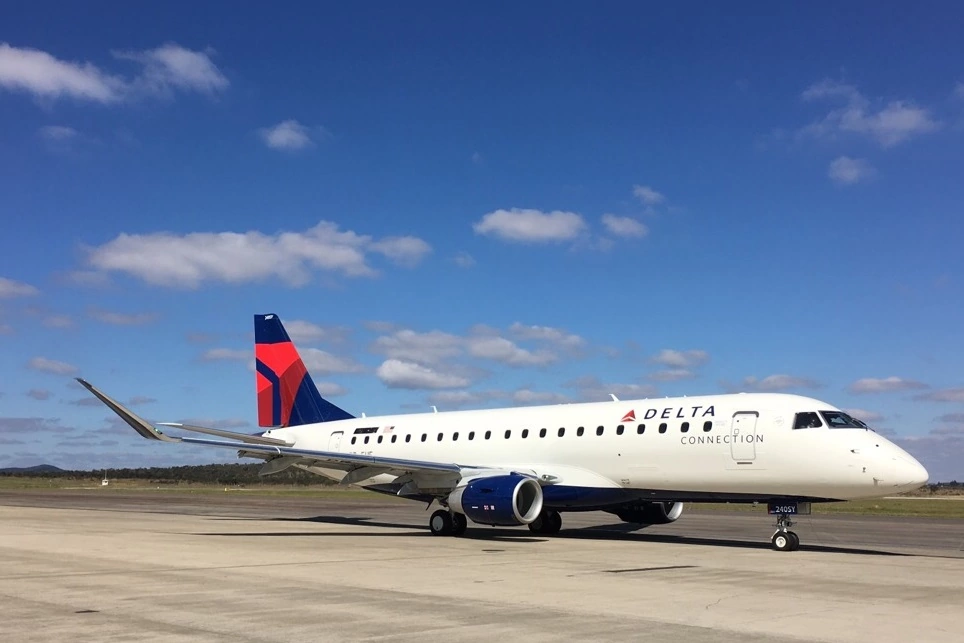
Fly for SkyWest
SkyWest Airlines is the largest regional airline in North America, flying under partnerships with major carriers like United Airlines, Delta, American, and Alaska Airlines. With a diverse fleet that includes Embraer and Bombardier aircraft, SkyWest offers pilots the chance to fly a wide variety of routes, from regional to cross-country flights. SkyWest is well-regarded for its strong training programs, pilot development opportunities, and a supportive work culture. As a SkyWest pilot, you’ll benefit from the airline's industry-leading career advancement programs, offering a direct path to positions with major airlines.
Major Affiliate(s): Alaska Airlines, American Airlines, Delta Air Lines, United Airlines
Fly for Regional Independent, Charter, Or Cargo Airlines
Regional Independent airlines (reginal airlines not associated with a major airline counterpart), charter, and cargo airlines can fall anywhere on the spectrum of size and benefits for airline pilots. Small regional independent airlines like Horizon Air, sometimes operate in a small regional area (like the pacific northwest USA) and while they are small, they still offer very good pay and benefits to pilots. Cargo airlines can be very small, like Northern Air Cargo in Anchorage, Alaska, with eight aircraft, or very large like Prime Air, or FedEx or UPS.
Regional Independent Airlines
Regional Independent Airlines operate smaller aircraft on short-haul routes, typically connecting smaller cities with larger hubs or serving underserved markets. Unlike regional affiliates tied to major carriers, independent regional airlines function autonomously, offering their own ticketing and branding. They play a crucial role in enhancing connectivity in areas with limited air service and may cater to niche markets or provide charter operations. These airlines are essential for bridging remote communities and supporting local economies, often prioritizing personalized service and flexibility.
Public & Private Charter
Public and private charter companies hire airline pilots to fly charter flights – a part of the airline industry that is defined as “unscheduled flights.” These flights, in contrast to an airline’s published schedule, fly unpublished schedules and could include repositioning military members or flying large sports teams to their events. Charter pilot jobs are all over the map when it comes to qualifications, pay, and quality of life. Some are considered entry-level jobs and pay is on the lower end of the spectrum. Some are highly sought after and have higher pay and better quality of life.
Cargo Airlines
As with charter pilot jobs, cargo jobs are all over the spectrum of pilot pay and quality of life. Some hire with minimum commercial pilot requirements, pay low wages, and come with night and weekend schedules. FedEx and UPS, on the other hand, have some of the highest industry wages and best quality of life, with a lot of flexibility and time off for senior pilots.
Airline Pilot Career Advancement
If becoming a pilot isn’t enough, there are opportunities for career advancement at many airlines. Every airline has a seniority list, and new pilots begin on the bottom of a seniority list. These pilots often fly night and weekend schedules, have lowest pay, and fly in the “right seat” as a First Officer for years before they upgrade to Captain and fly in the left seat.
At any airline, the First Officer and Captain are trained to the same standards. There is no difference in skill level, except that the captain usually has years of experience compared to the first officer. The captain is the leader of the flight and the ultimate pilot in command. Although both pilots are trained the same, captains may undergo additional leadership training.
Both first officers and captains can also participate in other roles, such as simulator instructor, check airman, union representative, safety analyst, or management roles.
The entry-level pilot at an airline is a first officer, or sometimes second-in-command (SIC). Both pilots are trained as pilot-in-command, but the first officer will typically resume a SIC role, deferring to the captain as pilot in command.
Mid-level pilot careers can include moving up to a bigger aircraft, upgrading to captain on an aircraft, and/or other roles within the company like flight instructor, safety program manager, or classroom teacher.
Senior-level pilots might find themselves in check airmen roles, teaching the flight instructors and writing the training programs at an airline. Other opportunities may include Chief Pilot, Assistant Chief Pilot, Safety Management Pilot, or union leadership.
For those pilots who are reaching for the stars, upper management – such as Chief Executive Officer or Chief Training Manager at an airline often includes pilot representatives, people who have been pilots at the airline for long periods of time, and people with college degrees. These jobs are often full-time jobs, and many pilots no longer fly airplanes once they obtain an executive level position.
Most airlines have a Board of Directors, and often the BOD will include pilot representatives. Directors on a board are often highly skilled, have a college education, and have obtained success at a higher level like CEO or CFO.
Is the Airline Pilot Lifestyle Right for You?
Airline pilots are paid well, have ample travel opportunities, and most pilots really love flying. The lifestyle is full of benefits, but it isn’t for everyone. Pilots are highly skilled and must have the ability to learn how to operate a highly technical (and very large) machine. Pilots are usually very dedicated and self-motivated.
Airline pilots spend a lot of time away from home, but are rewarded with a lot of time off, as well. While most people work five days out of the week, airline pilots might only work three days, but those days include overnight stays at hotels instead of at home.
In addition, pilots cross time zones and must deal with jet lag, as well as a variety of work conditions. They might preflight an airplane in the snow in New York City, fly across weather systems, and land on a beach in Los Angeles.
The job has its challenges, like de-icing an aircraft in a snowstorm, or flying around thunderstorms, and it can be stressful working to keep passengers and crew members safe, but then you might land in Hawaii and get to have a day on the beach.
The Airline Pilot Career vs Other Commercial Pilot Careers
Airline pilots are all commercial pilots, but not all commercial pilots are airline pilots. A commercial pilot certificate merely allows a pilot to get paid to fly – this can include any paid flying job. In the U.S., airlines are more highly regulated than commercial operators, and airline pilots are required to obtain an additional certificate called an Airline Pilot Certificate.
Lifestyle
Education & Training
Investment
Compensation
Career Advancement
Structured schedules, extensive travel, overnight stays, time away from home, high job stability.
Requires FAA ATP certification, type ratings, and extensive hours (typically from a flight school or university).
Significant costs for flight training (e.g., ATP certification, type ratings), typically over $80,000-$150,000.
High earning potential; starts around $60,000 annually for first officers, up to $400,000+ for captains at majors.
Clear progression: first officer → captain; seniority determines routes, schedules, and pay.
Varied schedules, regional or niche travel, potential for flexible work, lifestyle influenced by job type.
May only need a commercial pilot license; additional certifications depend on job type (e.g., aerial spraying).
Moderate investment; varies widely based on the specific career path (e.g., $30,000-$100,000).
Moderate to high earnings; $40,000-$100,000+ annually depending on job type and experience.
Advancement tied to job type; potential to own/operate a business or transition to specialized roles.
Become An Airline Pilot
Lift off toward your future pilot career with training at CAU. Classes offered year round and start every 10 weeks.
Becoming an Airline Pilot: Things To Consider
Becoming an airline pilot is a fantastic career choice, but there are a few things to consider when determining if it’s the right career choice for you.
 Assess your fit for the lifestyle.
Assess your fit for the lifestyle.
Do you like being away from home? Will that change if your family situation changes with marriage, kids, etc? Do you enjoy traveling or does sleeping in hotels make you cringe? Do you appreciate a regular workweek with every weekend off, or do you like the flexibility of working some nights or weekends and getting time off during the week? These factors might affect your decision.
 Compare different airlines and companies.
Compare different airlines and companies.
Airlines vary widely when it comes to benefits, compensation packages, schedules and work-life balance. But these all tend to improve as you work gain experience in the industry and with seniority at a company. Still, different regional airlines will have different union contracts, and different work rules, wages, and lifestyles.
One regional airline may only fly to a few small cities in the pacific northwest, for example, but might have been hourly pay. Another regional airline might fly everywhere in the U.S. that a major airline flies but may have a worse schedule. One major airline may have a variety of aircraft to choose to fly, but you may work more days than others. Another may be limited to one airplane type but may have more schedule flexibility.
 Plan out short-term or long-term career goals
Plan out short-term or long-term career goals
What type of flying do you want to do for the rest of your life and how do you get there? Do you want to fly wide-body aircraft internationally for Delta Airlines and eventually make a lot of money flying very few hours? You might want to start at one of Delta’s regional partners like SkyWest Airlines. If you want to live and fly in Alaska, you might start at Horizon Air, which is a regional airline owned by Alaska that offers a pathway program to Alaska Airlines.
 Choose the right flight school.
Choose the right flight school.
Flight schools are as different as airlines, and each one has advantages and disadvantages. Can you afford to invest all at once for a fast-track program where you fly every single day and immerse yourself in getting done as quickly as possible?
Do you have other interests like managing an airline? You may need a college degree. Or maybe you want a degree to ensure that you are competitive when it comes time to apply for airline positions? A college path may be better for you.
 Take advantage of your resources.
Take advantage of your resources.
There are many resources available to pilots to assist during your training and job search. Aviation clubs and organizations can help with education, camaraderie, and mentorship. Scholarships are also available through many organizations to assist financially. And your school or training program may have help available for studying and obtaining jobs. Use all of these to help you get ahead.
Become An Airline Pilot
Lift off toward your future pilot career with training at CAU. Classes offered year round and start every 10 weeks.
Pilot FAQs
Eligibility & Qualifications
No, it is not required to have a college degree to be a pilot. However, a degree can help you stand out from other candidates and can offer time-saving benefits.
No, a bachelor's degree is not required to be a pilot. However, a degree can help you stand out from other candidates and can offer time-saving benefits as well as benefit long-term career growth.
Yes!
There is a process that pilots go through that involves an Aviation Medical Examiner, and it depends on how long you’ve been diagnosed, if you’re on medications, which medications, what the psychologist report says, and many other factors. But it’s absolutely possible – many have gone through that process successfully.
It’s best to consult an Aviation Medical Examiner for your specific case.
You can begin flight training at any age. You have to be 16 to solo an airplane or to get a private pilot certificate (14 years old for a balloon or glider). You need to be 18 years old for a commercial pilot certificate, and 23 years old to get an airline transport pilot certificate (21 if you have a bachelor's degree).
There’s inherent risk in everything you do. Being a pilot increases risk, but the aviation industry is intensively a risk-management industry, making flying airplanes statistically very safe.
There are no specific requirements for height. You just have to be tall enough to reach the rudder pedals and have long enough arms to reach switches on the overhead panels. Most airline flight decks have adjustable rudder pedals that accommodate most everyone. Very short people or tall people may be more comfortable in certain aircraft, but there’s no requirement.
Sometimes. An aviation medical examiner would have to consider your specific case.
An aviation medical examiner must review the person’s specific case. Sometimes, if the DUI was a certain number of years ago and there haven’t been any more legal problems, it’s allowed. More than one DUI or other legal issues may preclude a person from getting an aviation medical. Certain companies also have their own requirements. For example, some countries don’t allow people with DUIs into the country; if a company flies there, you’re not likely to be hired there.
It depends. An aviation medical examiner can review specific cases. The FAA has a mandate that an airline pilot must be “of good moral character” so it likely depends on the type of felony and individual circumstances. In addition, each company will have different requirements for hiring individuals.
Cost & Compensation
Expensive is relative. For the average American, yes, flying is expensive. But the payoff of being an airline pilot and making a six-figure salary can make it worth it to many pilots.
It costs anywhere from $10,000 - $30,000, depending on factors like weather, schedules, aircraft availability and your earning process.
This depends on the type of pilot job, and your definition of “a lot.” Airline and cargo pilots make six figure salaries. Many corporate or charter pilots do, too.
Education & Training
It can take six months to a year or more to become a pilot, depending on many factors, including how much time you are able to devote to it, how much studying you can do, how quickly you learn and retain material, the weather, aircraft and instructor availability, and financial resources.
Becoming a pilot isn’t harder than learning most other skills. The hard part often comes with perseverance and stamina. It’s a marathon, not a race.
To become a private pilot, the minimum number of flight hours is 40, however the average is closer to 70 hours. To obtain an airline transport pilot certificate, the minimum is 1500 hours (except in some other very specific circumstances.)
Lifestyle
Yes! Most pilot jobs come with a competitive salary, great retirement benefits, travel benefits, and schedule flexibility- not to mention the best view in the world!
Some days can be stressful, but most days are not.
Some parts of flying can be hard. People find things hard at different parts and during different times during flight training. The average day in the life of a pilot is relatively easy – until it’s not. Pilots are paid well to handle those times when it’s not easy.
Become A Pilot
Request information about CAU to get started towards your airline pilot career pathway